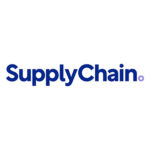Índice do artigo
Procurement & Supply Trends 2021
Supply chain digital was lucky enough to gain some valuable insights from Mark Perera, CEO of Vizibl on his 2021 predictions on key procurement and supply chain trends. Mark offers us his suggestions on manoeuvring through the rocky roads ahead, the vulnerability points CPOs should look out for and how to build a more resilient and agile supply chain.
So, without further ado, let’s begin.
Trend #1- Procurement with a purpose accelerates
For many, the reality of our climate emergency was brought into sharp focus in 2020, as a result of, and even prior to, the escalation of the COVID-19 pandemic. For example, the worldwide financial sector understands that the investment risk of global warming is real and even before the pandemic, they had started to adjust their behaviour accordingly. This means that Environmental, Social and Corporate Governance (ESG) frameworks have gone beyond a simple tick-box exercise.
In 2021 investors will only increase their scrutiny of organisations’ maturity and approach towards sustainability when analysing opportunities. As a result, ESG ratings are now at the top of the sustainability agenda.
Likewise, the millennial and Gen-Z workforce is not naïve to the impact of climate change. They recognise that profits, process improvements, and product development are necessary objectives for every organisation. However, they are certain that large companies have the resources to do far more when it comes to serving a higher purpose, and as a result, sustainability is high on their agenda.
The step-change that businesses must undertake to meet these sustainability demands in all aspects of their operations – including the supply chain – is now all about building purpose-led ecosystems to deliver on sustainability goals and Davos commitments. This means that organisations need to move beyond simply monitoring supplier compliance, to actively collaborating with suppliers on initiatives to improve environmental, social, and economic performance. They need to move towards a purpose-led procurement approach; we will see that accelerate in 2021.
Amidst a myriad of operational issues that organisations need to prioritise in 2021, as the COVID-19 pandemic continues, organisations must put ESG principles into practice when managing supply chain impact, adopting a ‘Procurement with Purpose’ approach to boost resilience, from both a profit and planetary perspective. With today’s public more socially conscious than ever, businesses must align themselves with this shift towards a sustainable supply chain or risk losing business due to inaction.
Trend #2 – Continued disruption of global supply chains as a result of COVID-19
The shock of COVID-19 will continue to be felt worldwide in 2021 as organisations continue to recover from the initial impact on global supply chains. The unprecedented nature of COVID-19 has forced companies, and industries, to rethink and transform their supply chain models – for good.
Historically, businesses have focused on supply chain consolidation, often resulting in suppliers being squeezed. However, the effect of these measures is that they have removed buffers and flexibility to absorb disruptions such as COVID-19. With no firm timeline on the vaccine rollout – key to containing the virus and minimising supply chain disruption – organisations should continue to build long-term supply chain resilience into their operations.
This will be critical for long-term survival, especially as different territories will continue to adapt at different rates when moving out of the pandemic. Greater visibility into complex supply chain activity will equip organisations with the knowledge to reduce supplier exposure and risk, which will help them vary their supply chains.
COVID-19 has exposed the fragility of long-distance, international supply chains. Building-in a level of resilience will see conglomerates working with a much wider range of suppliers, from global corporations to smaller, regional start-ups to ensure business continuity.
To achieve this resilience, organisations must:
- create cross-functional or cross border teams to deal with supply chain shortages
- build additional buffers of inventory and raw materials
- develop expected-case and worst-case scenarios
- examine additional delivery routes and potential local sources
- explore technologies that can help them to diversify and innovate throughout their supply chain
Supply Chain Digital Magazine is the ‘Digital Community’ for the global Procurement, Supply Chain & Logistics industry.







